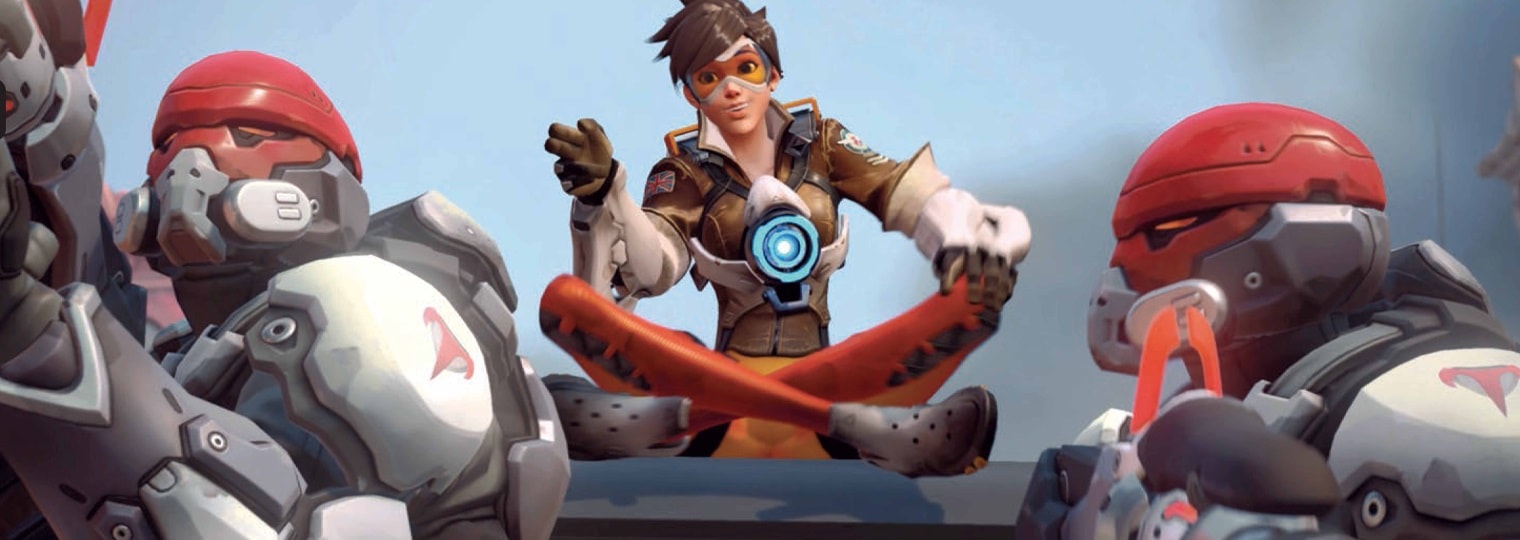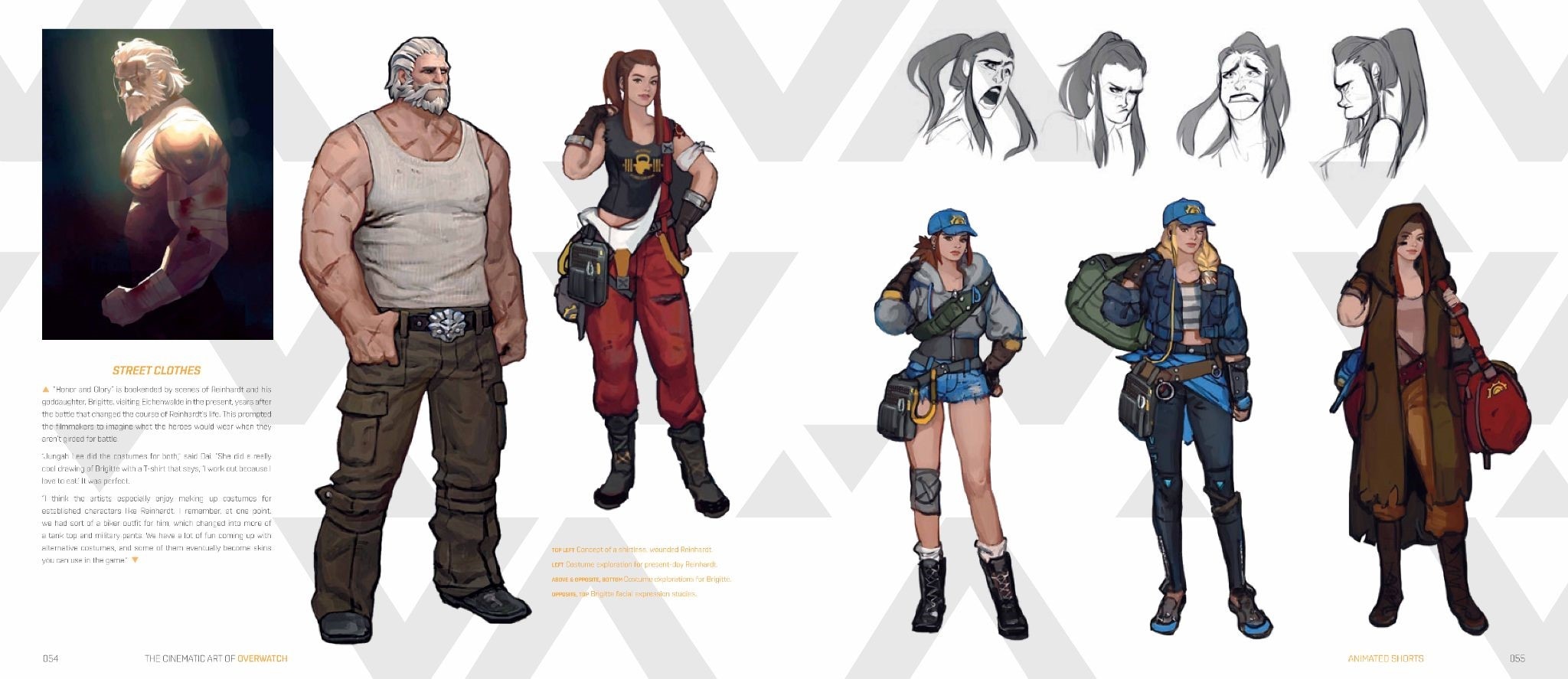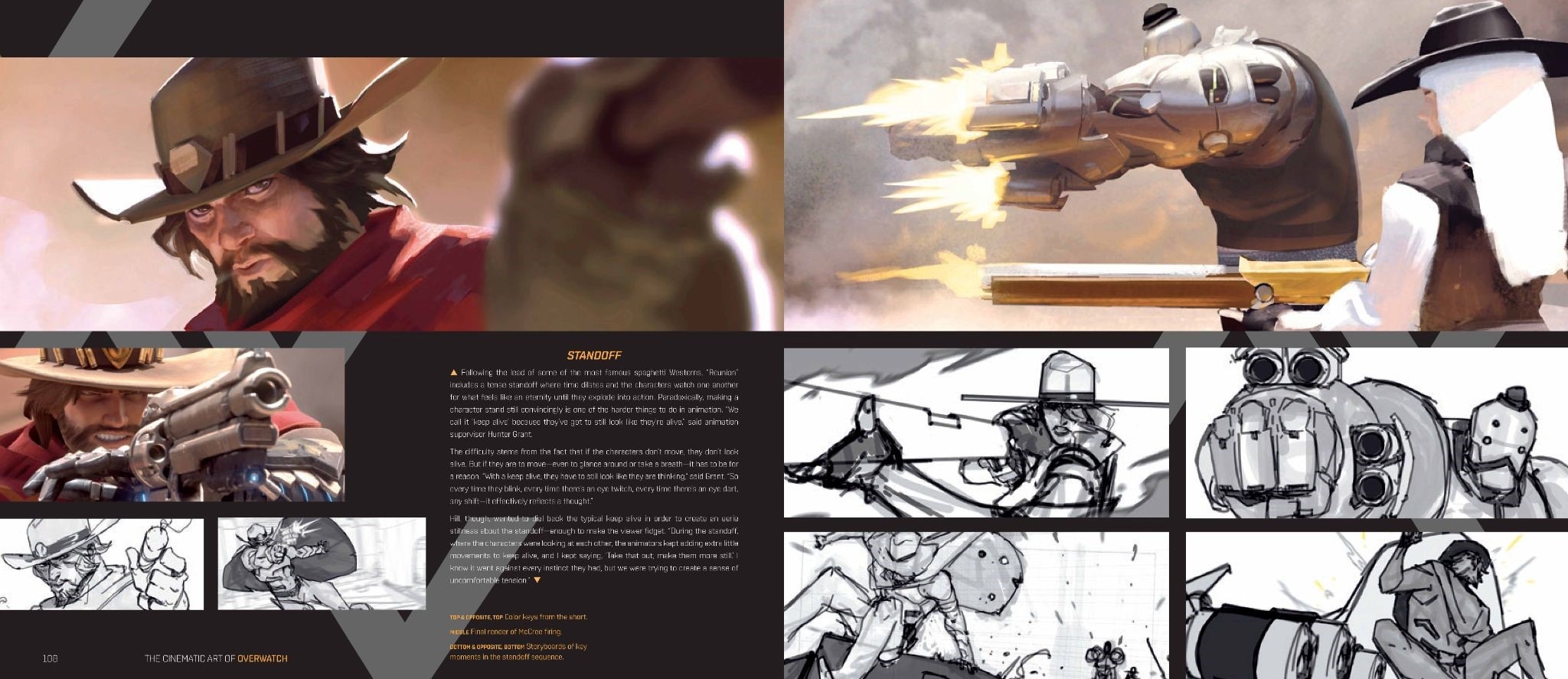
In 2014, the introduction to the world of Overwatch began with the fervent beat of a drum. As the screen flashed to an image of a frigid Russian warfront littered gun-toting militants and arachnid-like omnics, the music surged into a crescendo of heavy horns and distressed violins while a disembodied voice uttered a single word: Conflict.
We glimpsed havoc. Global devastation wrought by malevolent, seemingly unstoppable robotic entities. A world teetering on the brink of anarchy.
But, then, the music segued into a swell of triumphant trumpets. A new hope arose. For the first time, we saw the soldiers, scientists, adventurers, and oddities that comprise the ranks of the international task force we would come to know as Overwatch.
This first animated short—and the many that would follow it—was a marriage of visual and musical passion crafted by the artists and composers whose work on the many Overwatch cinematics has now been compiled into a second artbook and an album. Together, The Cinematic Art of Overwatch: Volume 2 and the Overwatch: Animated Shorts soundtrack chronicle the hard work and talent of the teams behind the Overwatch shorts. We caught up with some members of these teams to discuss what goes into developing cinematic visuals and music.
Envisioning Visuals
From concept sketches and storyboards to final renders featuring the rich, living animation and bold art style that have become hallmarks of the Overwatch universe, the collaborative journey of the visual development process for a number of cinematics is chronicled in the newly-released Cinematic Art of Overwatch: Volume 2.
For creative director Jeff Chamberlain and cinematic director Jason Hill, each cinematic undertaking has been largely driven by the emotions captured in animated form and aroused in the game’s worldwide audience. “When working on cinematics, we’ll collaborate with our concept team to explore options for both character design and environment looks,” says Hill. “There are countless ways to evoke an emotional connection to a piece through color or framing, in addition to what a character is doing. My goal is to work with the visual development team and find the best options possible. It doesn’t hurt that we have exceptionally talented artists who come up with fantastic ideas along the way.”

Getting that desired emotional connection to viewers while telling a gripping story in a condensed amount of time requires a delicate touch—a talent that visual developers have spent years refining. Overwatch cinematics only last a few minutes’ time, which means the luxury of telling a long-form story is something the team, according to Hill, just doesn’t have. “It’s important to try and maximize the heart and soul of the piece into what we’re making. Ultimately, this comes down to characters and their relationship to others and the world around them. We try to dig into what each character’s specific needs are and build a story around that.”
The team’s “north star,” says Chamberlain, is their desire to tell emotionally engaging, character-driven stories that resonate with audiences. The development process for new Overwatch shorts begins with setting up the foundation of the story they intend to tell, which Chamberlain dubs “the most brutal and rewarding part of the process.” Once they’ve found that perfect hook, the artists begin sculpting the evocative moments and character arcs inherent to each cinematic. “Animation, lighting, layout, camera, sound, effects… all of it contributes to how you as an audience member feel over the course of the piece,” he says. “There are times when we review something and it takes you a few seconds to get back to reality and start discussing the work. Those are the moments when you know you’re onto something.”

An important part of the cinematic development process, Chamberlain and Hill note, is working in tandem with the composers on the Overwatch music team to bring out extra potency in the story being told. Eliciting the right emotional response from the audience entails tweaking small, subtle aspects like camera movements, voice acting, and the melodies that tie everything together. “Music is a huge component when it comes to making cinematics, since it’s a great art form for expressing an emotional state,” says Chamberlain. “We spend a lot of time refining our scores with our very talented—and patient—composers to ensure we get the emotional response we’re going for.”
Two of those composers—director Derek Duke and composer Adam Burgess—lended their talents to the creation of the new Cinematics soundtrack accompanying the release of the latest cinematic artbook and sat down to provide some insight into how the enchanting scores for Overwatch cinematics are made.
Sounding It Out
The new Overwatch: Animated Shorts soundtrack is a compilation of scores unique to each Overwatch cinematic, from “Recall” to “Reunion.” It’s an accumulation of passion and love for the future-possible world of Overwatch from the music team that composed, recorded, and carefully cultivated life into each note of the 11 tracks that accompany the game’s animated cinematics and hero origin stories.
“Our passions are games and the entertainment in the stories that we tell,” says director Derek Duke, who helmed the music direction for the cinematics. “It’s working on it until it feels right and does its job. Some of the work on these soundtracks can take a year to 18 months to 2 years from start to finish, whether we’re starting off with feelings and observations or we’re on the mix stage at the end of a project figuring out how to pull that very last ounce of emotion from listeners and get those tears going. Whatever it takes to get the most out of our music.”
For the sound team, composing tracks is like weaving an elaborate story upon the lines of a music staff. The talented team of musicians that orchestrate each cinematic score work in tandem to complement the world and characters given life by their fellow artists and animators, informing and enhancing the story being told upon the screen. “Music has the power to pull your emotions in a way that a lot of other things don’t, but it has to pull your emotions in the right way,” says composer Adam Burgess.
Utilizing music to bring out the emotion in a cinematic scene and pulling viewers’ emotions in the intended way can be a daunting task for the team—especially because, according to Duke, there’s never any one solution to a problem.
“It’s not like, oh, we push the fader and make it really loud or really soft,” he says. “Even going back to the very first cinematic, the part where the boy is speaking with Tracer in the museum about how the world needs more heroes—we were trying in the franchise to create something new and we’d begun the cinematic with a soft, subtle synth noise. We thought that at the end we could play those soft notes again. But no matter what we did, it wasn’t resonating and getting the emotional response we wanted. So we chose to switch it and put it on the piano. Immediately, we got a more emotional response, because the piano is a human instrument and has a long history built into our culture. It gave us the emotional power we wanted.”
Getting that power just right is a process that requires minute fine-tuning and persistent repetition. The constant collaborative back-and-forth between the composers, producers, and directors on the Overwatch team is key to the raw emotion intrinsic to every score they create. “The best emotional responses from the audience come from when things are totally aligned,” says Burgess,” and that’s why these things take so long. It’s constant iteration so we get things right, pushing and pulling listeners. Music is so tied to the story, and that’s where a lot of the power comes from.”
The Cinematics soundtrack is the culmination of these years of effort and a testament to the team’s endeavors to perfect the impact of their music. And for Duke, Burgess, and the rest of the composers and sound designers, it’s a living thing that has been a huge part of their lives.
“Music is more than just a job,” says Duke. “It’s a real thing for us, and it’s such a huge part of our lives. We live it everyday. It’s become an extension of ourselves.”
Experience the music of each Overwatch cinematic and discover how the animated shorts were made with the new Overwatch: Animated Shorts album and The Cinematic Art of Overwatch: Volume 2. Check out the YouTube playlist to sample some of the tunes, and check playoverwatch.com/music to find out where you can listen to the soundtrack once it’s available in your region.